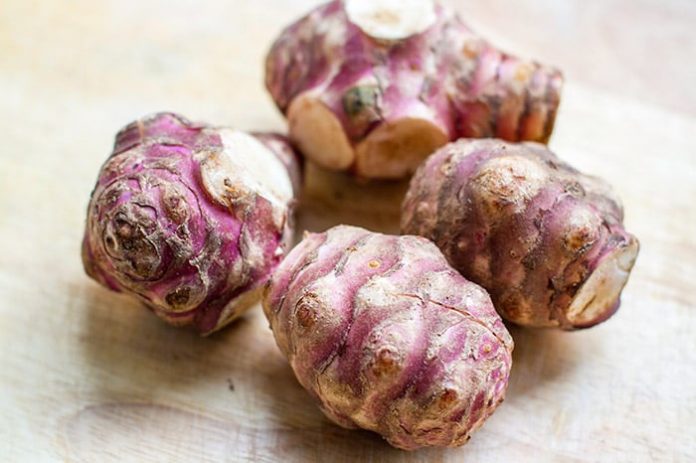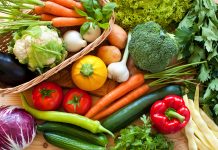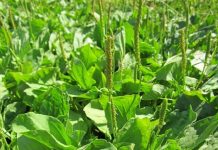Jerusalem Artichokes are not actually an artichoke at all, but these nutrient-rich tubers should be a part of every preppers survival food plan. Native Americans once planted them along every trail they frequented simply to ensure a viable source of food would always be handy as they went about their travels.
Sunchokes, as Jerusalem artichokes are also commonly called, sometimes get a bad rap for being invasive. Like honeysuckle and mint, these hardy vegetables do spread out in great abundance – but that’s not a bad thing from a survival food perspective.
Not only do Jerusalem artichokes grow in leaps and bounds after being planted, there may be no other vegetable that thrives so expansively even when neglected. You can simply plant the sunchokes in a spacious and out of the way spot and, well … forget them until it is time to harvest.
Why Preppers Should Grow Artichokes
Every single Jerusalem artichoke plant is capable of producing a minimum of 75 but as many as 200 tubers during just a single growing year. You can essentially harvest the tubers anytime from spring right up into the winter months.
Because sunchokes are a perennial vegetable, you do not need to spend time replanting it every growing season. In fact, Jerusalem artichokes will seed itself over and over again.
When growing this optimal survival gardening plant, you can just put it in the ground and forget about it until you are ready to harvest. It will thrive in any soil type, is highly drought resistant, and there is not even any need to do weeding throughout the growing season.
Most of the Jerusalem artichoke plant can also be used to feed your survival livestock. Hogs, goats, cattle, chickens, sheep, ducks, rabbits, guineas, and turkeys can safely eat the stems, leaves, and blossoms of the sunchoke plant. Hogs (or pigs, if that’s how the animals are referred to in your neck of the woods) are even prone to eating the tubers.
Horses, which will likely once again become the primary mode of transportation during a SHTF event, can also eat the parts of the sunchoke plant noted above. I plant rows of Jerusalem artichokes along the edges of the pasture for the horses to eat in the late fall when they have already consumed most of the grass.
What Is A Tuber?
It is the tuber on the Jerusalem artichoke that people tend to feast upon the most. A tuber is the swollen stem of a plant that is located underground. The tubers of Jerusalem artichokes range in color from red to purple, to brown, and white. 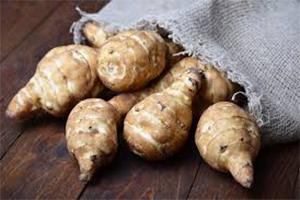

The interior flesh of the sunchoke tuber is always white and somewhat resemble ginger – but is slightly more knobby in shape. The tubers on this vegetable plant have a nut-like taste. Jerusalem artichoke tubers are more crisp and sweet, as well as smaller, than potatoes.
Nutrient Value And Healing Properties
These tubers have a significant protein value but less starch than potatoes. Sunchoke tubers contain a substantial amount of inulin, a prebiotic fiber that is commonly found as an ingredient in all-natural home remedies. This probiotics may help increase the growth of bifidobacteria – a good bacteria that may prevent destructive bacteria from forming and might aid in the reduction of some carcinogenic enzymes.
These tubers also produce a significant amount of trace minerals, iron, electrolytes, copper, fiber, and potassium. Sunchokes may help lower blood pressure by essentially counteracting the impact sodium has on the human body.
The tubers from Jerusalem artichokes actually boast a higher protein content than corn, soybeans, beans, or wheat. Both the stems and leaves on sunchoke plants contain roughly 28 percent protein – that figure is twice the amount of protein found in corn.
They also contain smaller percentages of folates and other B-complex vitamins, such as thiamin, pyridoxine, riboflavin, and pantothenic acid.
Jerusalem Artichoke Facts
● They are members of the Helianthus genus, the same genus as sunflowers belong.
● Sunchokes typically grow between eight to 15 feet tall.
● The leaves on sunchokes resemble those found on sunflowers. They have yellow flowers that grow large and do not bloom until late in the summer – sometimes they remain blooming long after sunflowers have gone to seed.
● Exactly how Jerusalem artichokes got their name remains a bit of a mystery – they have no connection to Jerusalem at all. These plants are native to North America and might have originated along the Mississippi and Ohio rivers.
● Native American tribes often used sunchokes as a companion crop for sweet corn and beans.
● Jerusalem artichokes can be harvested in the spring when the inulin properties are at their peak, or at the end of summer after they have finished flowering and their stalks begin to fall over.
How To Grow Jerusalem Artichokes
Plant the sunchokes in the spring after the risk of hard frost has passed. Typically, Jerusalem artichokes are planted in mid March through early April – depending on your growing zone.
Till the ground to turn it and expose the nutrient-rich and softer soil below. Plant the sunchokes at least four but no more than six inches deep. While you can start them in a container and relocate them into the ground, they do not transplant well.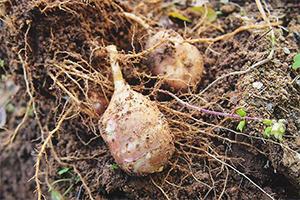

The Jerusalem artichokes should be planted in a sunny spot in either groups like you would do a bush or shrub or rows that are five feet wide. The tubers should be spaced one foot apart in the soil.
It takes at least 90 days for Jerusalem artichokes to fully mature. Sunchokes are recommended for growing on agricultural zones 3 through 8. Because these perennial vegetables are best suited for colder climates, planting them in a climate that boasts temperatures that range higher than those in agricultural growing zone 8, will not likely produce a solid yield.
Remember, Jerusalem artichokes grow to some very tall heights, do not plant them in a spot that will throw shade on your other crops. Always make sure each sunchoke tubers boasts at least one “eye” or it will not grow. Even the tiniest little tuber stub tends to grow, as long as it has an eye.
If you are experiencing a cold early spring, consider mulching around the young plants as they come up to protect them from the chill.
There are several common and popular varieties of Jerusalem artichokes:
1. Sugarball – This variety produces white and small tubers that taste delicious when roasted.
2. Fuseau – The tubers you will harvest from this variety of Jerusalem artichoke boast a smoky flavor. These very large and smooth tubers increase the weight of your yield.
3. White French Mammoth – This type of sunchoke produces an especially knobby tuber that is fairly large.
Harvesting Jerusalem Artichokes
To harvest sunchokes, simply dig them up the tubers from the ground just as you would potatoes. You can harvest them as soon as they mature or leave them in the ground into the winter and dig them up when desired to enjoy a more fresh tuber. Some gardeners staunchly maintain that waiting until the tubers have been exposed to a frost – or even two, gives them an even sweeter taste.
If you want to keep the tubers growing longer into the year, add a one foot layer of mulch after the first frost to prevent them from freezing.
Plant Diseases And Destructive Insects
I won’t say that Jerusalem artichokes are entirely plant disease and pest resistant, but not much phases the tubers or stunts their growth. The only real problem you might experience when growing these perennial vegetables is the rate at which they grow and want to take over an entire space.
Eating Jerusalem Artichokes
You can eat Jerusalem artichokes both cooked and raw. They are often sauteed, mashed, or even roasted to be eaten alone or as part of a casserole dish. If you clean and dry the sunchoke tubers that can be ground and used as a flour. Eating freshly harvested sunchokes does not typically cause any blood sugar hike as potatoes often can because these tubers have a low score on the glycemic index.
How To Cook Jerusalem Artichokes
1. Wash and peel (or just scrub) them just as you would when preparing ginger roots.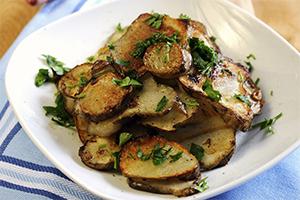

2. Using a sharp and sturdy knife, slice up the tubers.
3. The most common way to prepare Jerusalem artichokes is to roast them in oil – coconut or olive oil both work great.
4. Season the tubers with your favorite spices – I prefer garlic, salt, pepper, and a pinch of oregano.
Do not clean and wash the sunchoke tubers until you are ready to prepare them because they discolor quickly after being either peeled or scrubbed and exposed to water. Monitor the roasting or cooking of the tubers closely until you get more experienced with the right mixture of time and heat to use – Jerusalem artichoke tubers can turn to mush quite easily.
You can also substitute Jerusalem artichokes for potatoes in nearly any recipe that calls for them. The sunchokes generally have a mild taste that blend in with the other ingredients that join them in the cook pot or casserole.
Although it is a far less common way to use the heft yield Jerusalem artichokes produces, you can also juice them or turn them in a wine style drink.



